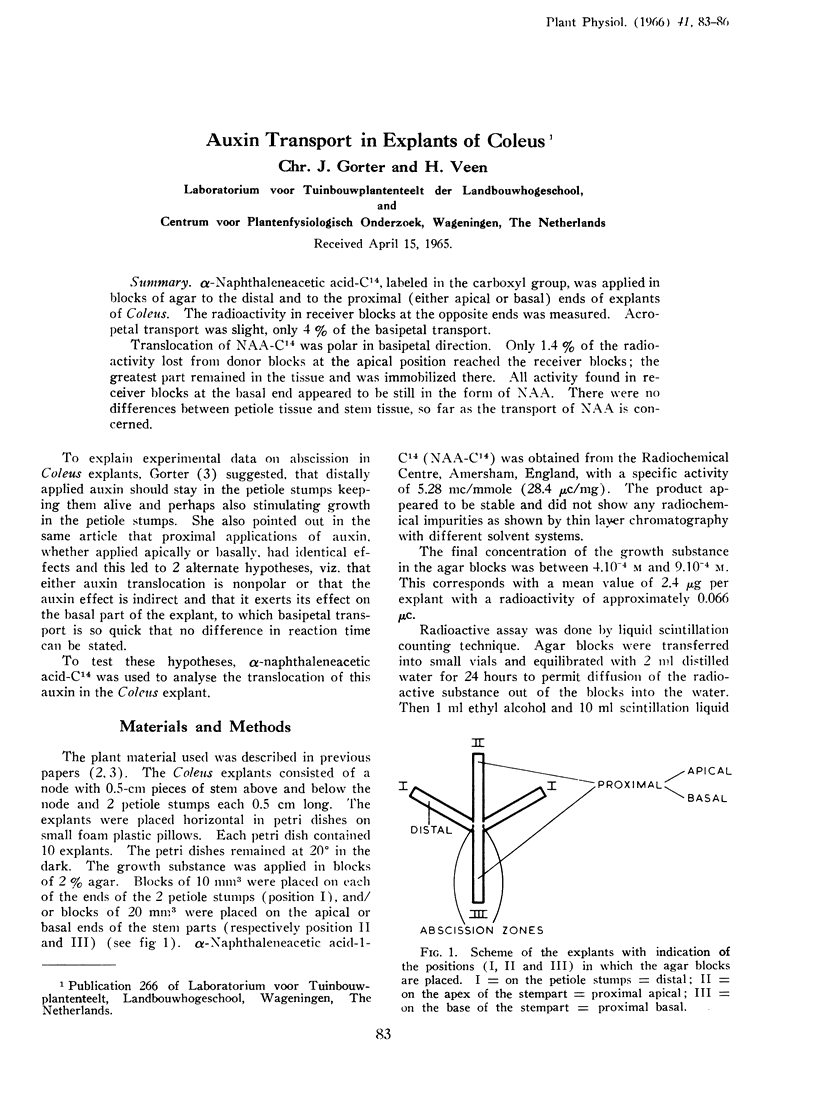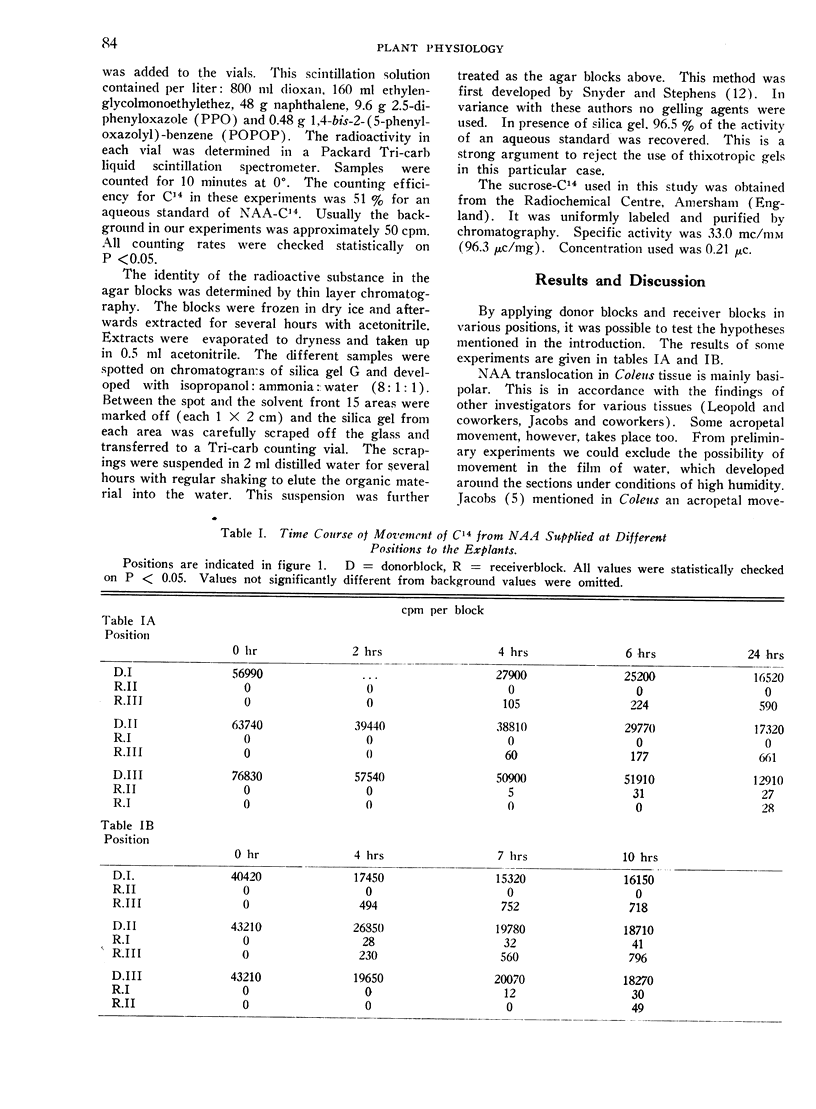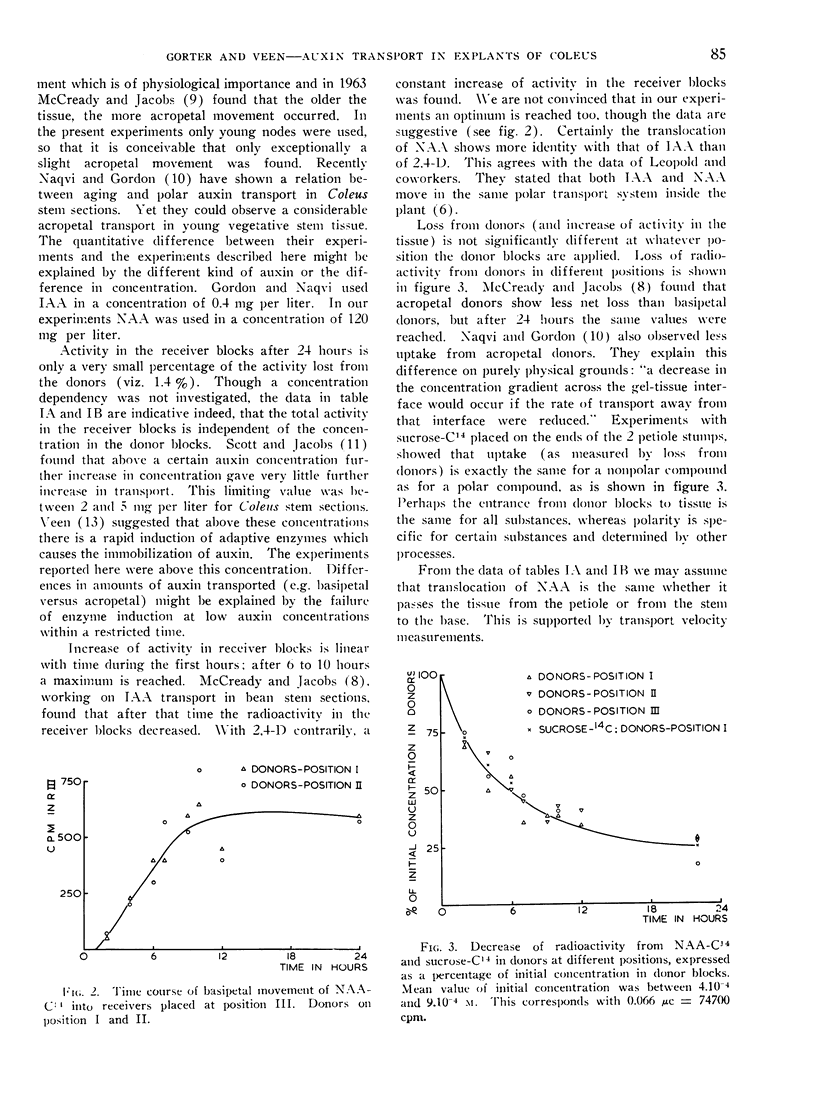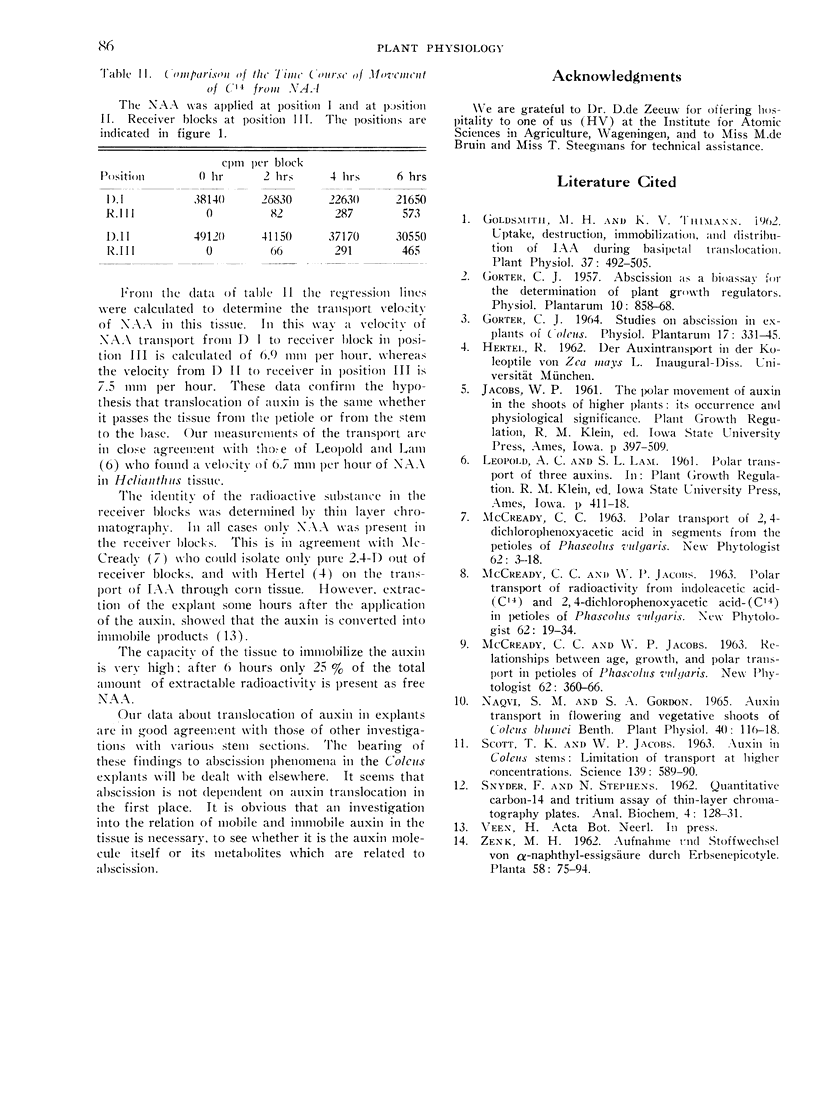Abstract
α-Naphthaleneacetic acid-C14, labeled in the carboxyl group, was applied in blocks of agar to the distal and to the proximal (either apical or basal) ends of explants of Coleus. The radioactivity in receiver blocks at the opposite ends was measured. Acropetal transport was slight, only 4% of the basipetal transport.
Translocation of NAA-C14 was polar in basipetal direction. Only 1.4% of the radioactivity lost from donor blocks at the apical position reached the receiver blocks; the greatest part remained in the tissue and was immobilized there. All activity found in receiver blocks at the basal end appeared to be still in the form of NAA. There were no differences between petiole tissue and stem tissue, so far as the transport of NAA is concerned.
Full text
PDF



Selected References
These references are in PubMed. This may not be the complete list of references from this article.
- Naqvi S. M., Gordon S. A. Auxin Transport in Flowering and Vegetative Shoots of Coleus blumei Benth. Plant Physiol. 1965 Jan;40(1):116–118. doi: 10.1104/pp.40.1.116. [DOI] [PMC free article] [PubMed] [Google Scholar]
- SNYDER F., STEPHENS N. Quantitative carbon-14 and tritium assay of thin-layer chromatography plates. Anal Biochem. 1962 Aug;4:128–131. doi: 10.1016/0003-2697(62)90029-5. [DOI] [PubMed] [Google Scholar]
- Scott T. K., Jacobs W. P. Auxin in Coleus Stems: Limitation of Transport at Higher Concentrations. Science. 1963 Feb 15;139(3555):589–590. doi: 10.1126/science.139.3555.589. [DOI] [PubMed] [Google Scholar]


